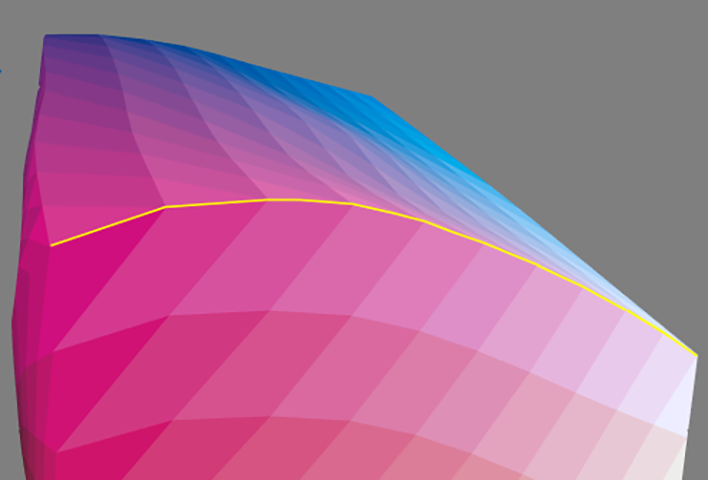

The calibration process ensures that for each tone value from 0% to 100% the exact amount of toner or ink is deposited on the media. This exact amount per tone value is determined by the calibration curve.
The amount of ink or toner on the media is difficult to measure in, for example mg / m². Therefore, PRISMAsync Print Server uses an indirect method to measure this amount on the media: Distance to White (DTW).
The DTW for a given tone value of a process color, for example cyan, is a distance in the Lab color space. It is the distance between the measured Lab value of paper white and, the measured Lab value of the process color at that given tone value. The DTW for tone value 0 is always zero. The DTW for tone value 100% is the maximum amount of toner or ink the printer can deposit on the media: maximum Distance to White (Max DTW)
 DTW tone values for cyan in the Lab color space
DTW tone values for cyan in the Lab color spaceNote that the application of the DTW concept is similar to the traditional concept of optical density.
The calibration target specifies per color channel (CMYK), the required DTW value for each tone value.
The calibration must ensure that the amount of toner or ink specified in the output profile is deposited on the media. Therefore, the calibration target generally is derived from the output profile. When the output profile is installed on another printer of the same type, the calibration will automatically adjust its target to this output profile.
However, there are situations that the output profile is invalid, for example because no output profile is available for specific media. In that case, PRISMAsync Print Server allows to derive the calibration target from the calibration measurements. Then, the calibration is done in such a way that the DTW increases linearly per tone value, until it reaches the maximum measured DTW value.
This method is also used in case of a composite output profile. It is not possible to derive a calibration target from the composite output profile.
The result of the calibration process are four calibration curves, one per color channel (CMYK). Each curve maps an input tone value to an output tone value, so that the correct amounts of toner or ink are deposited on the media.
Calibration curves can be restored to the default curves. Then, the default curves map input tone values to the same output tone values. This can be useful for testing purposes.